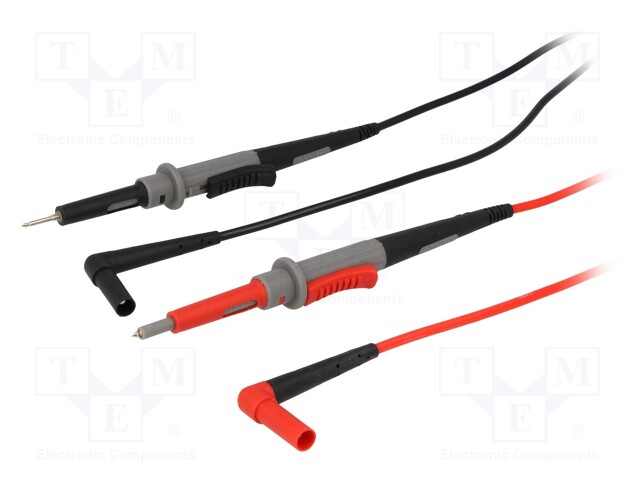Multimeter probes

A multimeter includes a pair of probes, they can be good or bad, but they are usual not the only option. Here I will look at different types of probes and what they can be used for.
Contents
Plugs
Cables
Standard probes
Probe with extra features on the tip
Probes with loose cable
What to look for in probes
Accessories for probe tips
Accessories for 4mm plugs
Piercing probes (This is also a accessory)
SMD tweezer probes
Homemade or DIY test leads
Conclusion
Notes
Plugs
But first I will look at the other end of the wire, the plug.
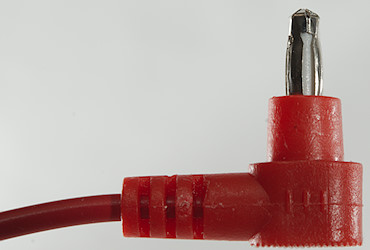
This type of plug is used on the cheap probes/meters and is not compatible with standard plugs. This means that a multimeter supplied with these probes may not fit standard probes, but will fit standard banana plugs.
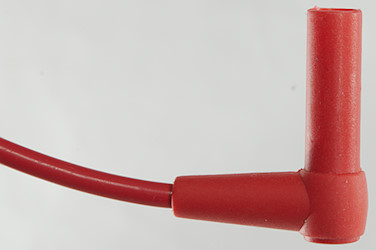
This is the standard probe, that is used by every better multimeter and that means the multimeter will fit all the different probe types on the market with standard plug.
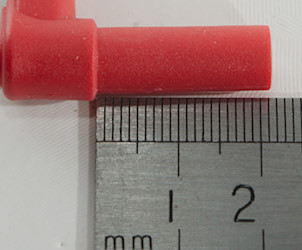
The shroud is usual about 21-22mm long. There are probes with shorter shroud, they are very common on the cheaper multimeters and will often have 17-18mm shroud. The full size shroud will usual work, but the plug cannot be fully seated.

There is also straight plugs, they are usual used on bench multimeters and for plugging into probes (See later).
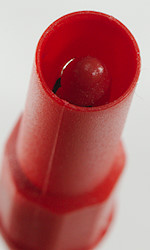
In this plug the tip is isolated.
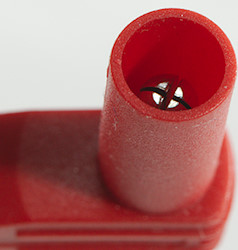
Most plugs is without tip isolation, on this one the tip is very retracted.

Most multimeter will also works with unshrouded banana plugs, they are great on the bench when working with low voltage, but are not really suitable for mains voltage.

Banana plugs can often be stacked.

Another type of banana plug, it cannot be stacked.
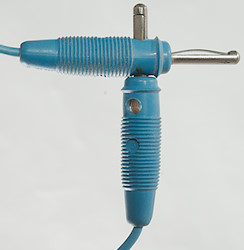
But can be connected together. This is often a bit problematic, due to the risk of shorts.

It is also possible to get them in shrouded versions

That can be stacked.


When having a mix of shrouded and unshrouded plugs and sockets these small adapters can be very useful. A shrouded plug goes into the adapter and can be used in unshrouded sockets.
Cables
Lets not forget the wire.

It is just about universal that the probe cables are red and black. For equipment that need more than two connections you may get other color probes in addition to the red and black ones.

The cables can have different thickness and some cables includes the marking and approval of the actual cable used.
The isolation can be made in different qualities, from a fairly stiff plastic, a soft plastic to silicone.
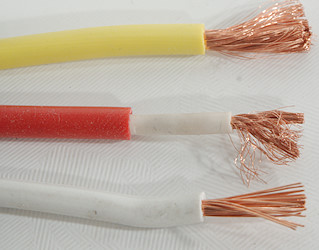
Inside the cable can be made different ways. The yellow one is for high current and the isolation is fairly thin. It is only rated for 60 volt, but 30A, this is not used for probes, but can be bought as test leads. The strands are very thin to make the cable flexible. The red one is a typical good quality probe with two layers of isolation (If the white isolation is visible, it is time to replace the lead), again with very thin strands. The white is a normal wire with thick strands and not nearly as flexible as the other two.
The actual amount of copper defines how much resistance is in the probes, this is mostly relevant if they are used to measure current, a good probe for current measurements will not have more than 30mOhm.
Standard probes
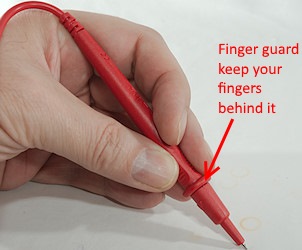
When using probes, always keep your fingers behind the finger guard.

A standard probe, here from a Amprobe multimeter.

It has removable tip cover, this is a safety feature for high energy usage, but can also be useful at lower voltage. If a probe slips the covered tip is less likely to make a short.
I have written a bit about the CAT ratings in my How do I review a DMM article.

The probe is 13cm long and the finger guard is 3.5cm from the tip.

Another standard probe, this time from Keysight.

The tip is made differently, but the safety ratings are the same.

This probe is 15cm long and the finger guard is 4.3cm from the tip.

A cheap probe, there is no CAT rating, but it says 1000V on it.
I would expect it to handle 1000V, but I would only use it on high voltage sources that is limited to a few mA.

The probe is 10.5cm long and the finger guard is 3cm from the tip and only 1.5cm from metal.

This probe has a trick with the tip cover.

You just need to turn the front of the probe and it can be retracted or extended, this means there is no risk of loosing the tip cover.


This is a fairly cheap probe with a very long tip. Without tip cover it can only be CATII

A closer look at the tip.

It includes a lid to protect the tip when not used.
Probe with extra features on the tip

Many probes has a indent on the tip.
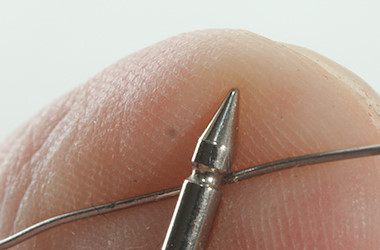
It makes it easier to hold a wire or leaded component against the probe, it will not slide around.
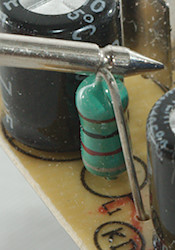
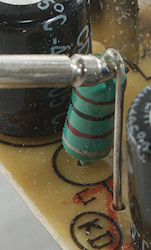
The same goes for measuring on some parts, but I prefer the solution from the second photo when it is possible.

This is a Rigol probe, but what is that on the tip?
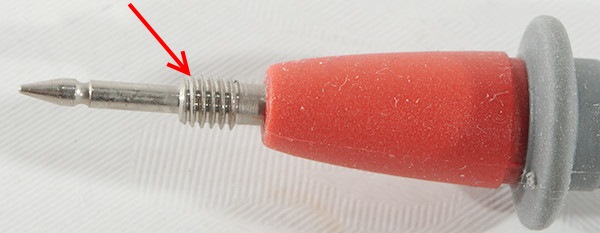
It looks like threads.

And is used to screw an alligator clip on. On probes without threads there are alligator clips that can be pushed on.

This can be very useful for handsfree operation.

This is another Fluke probe and it hides something under the tip cover.

This is a standard banana plug.

This makes it easy to connect the meter to equipment with 4mm terminals.
Probes with loose cable

This probe may look a bit strange.

And it is fairly long at 16.5cm and with 4 cm to the finger guard.
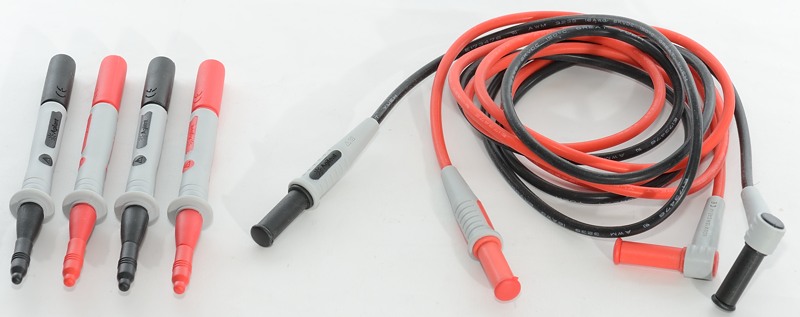
There is a reason for this, the cable and the a probes are two separate parts.
The loose cable is very useful when we look at more general accessories in a few chapters.

The set includes two probes, instead of removeable tip covers.
For another take on loose cables, see my review of Aneng AN8009, it includes a DIY probe
What to look for in probes
This depends on what you want to use the probes for.
When working with low voltage you will often want very good connection to probes, this means sharp point on the tip and a tip that generally give good connection (Gold coating can help with that).
With higher voltage there is seldom problems with the connection, but isolation close to the probe tip (i.e. CAT-III/CAT-IV) can be a requirement.
For current you want a probe with very low resistance, i.e. thick short cable, DIY is usual a good option here.
A high resistance in the probe wires also means it is made with fairly thin wire.
The cable has a slightly bendable strain relief where it comes out of the probe. Because the probe is moved around the cable will always moving/bending there, anything to prevent sharp bends will improve cable life.
Accessories for probe tips
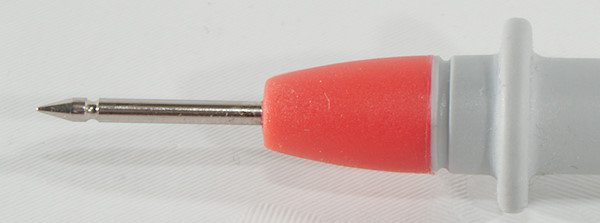
As long as you probe has a simple and long tip, it can use some accessories.

There is, of course, the alligator clip to push on.

A long thin probe tip.
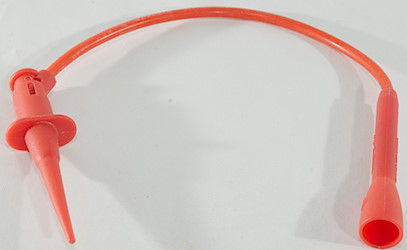

Grippers
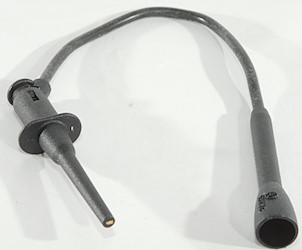

Another type of grippers
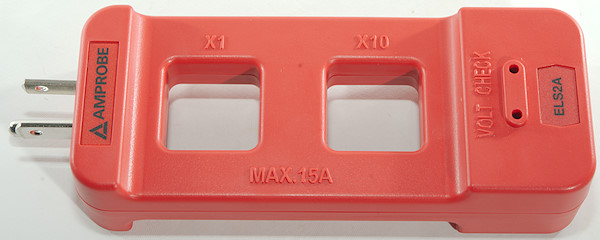
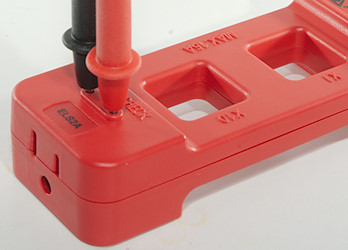
In US it is possible to use a current clamp adapter in mains outlets, it often has holes for measuring voltage.
Accessories for 4mm plugs

These accessories can be used with probes that include a banana plug or a loose cable with banana plugs, with normal banana plugs and some of them with shrouded banana plugs.
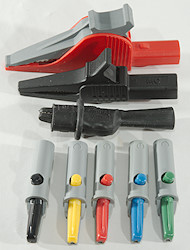
My most used accessory is probably alligator clips, they exist in many sizes and for shrouded or unshrouded plugs.


The cheapest alligator clips that fits banana plugs.


This type of grippers is probably my next most used accessory, they have a fairly secure grip on most wires.


This gripper looks like the above, but the claw is different and do not work very well.


Here the claw is a hook and locks the cable, it works much better.

Backpinning probes, these needles are made to push into some type of connectors from the back, making it possible to measure while the connector is connected.
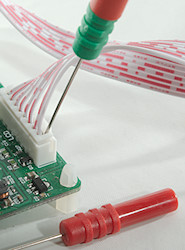
Here I use one of the probes on a small connector.


Connecting to a screw can be done with these adapters, they exists in multiple sizes.

Here are some loose probes, it is possible to get different sizes with more or less sharp tips. On the black one there is a spring behind the tip.

This accessory is not for multimeters, but makes it possible to use the test leads with other equipment, like an oscilloscope.
Piercing probes (This is also a accessory)
The idea is that a tin needle can cut through the isolation and contact the conductor inside. When the probe is removed the hole will basically close itself. This makes it possible to measure on wires without stripping or cutting it and without locating the ends of the wire.
This is mostly for automotive use and must not be used on mains cables (The “closed” hole may be safe for 12V or 24V, but it is there and is not safe to touch at mains voltages).

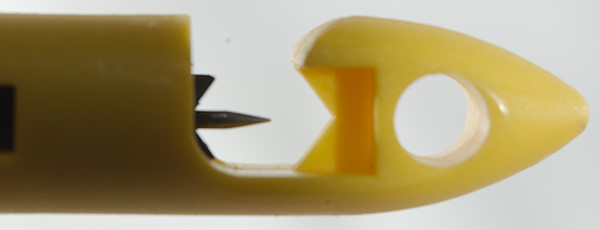

This probe is fairly heavy duty, you have to screw the needle in and out.


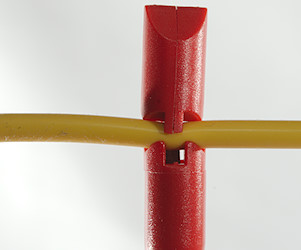
For smaller wires / thinner isolation this one is much faster, it has a small needed hidden in the plastic.
SMD tweezer probes
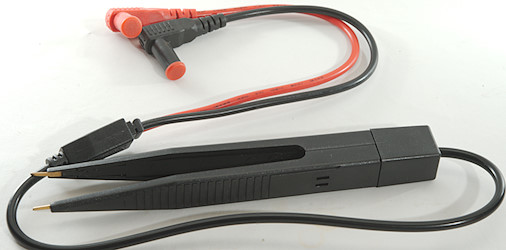
Measuring across SMD parts is rather difficult with normal probes, this type of tweezer probe makes it easier.
Note: This is a cheap model and the tips bends fairly easy.

It is just a big tweezer with a connection to each tip.
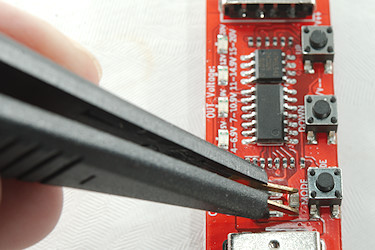
And can be help across a SMD part.
Homemade or DIY test leads
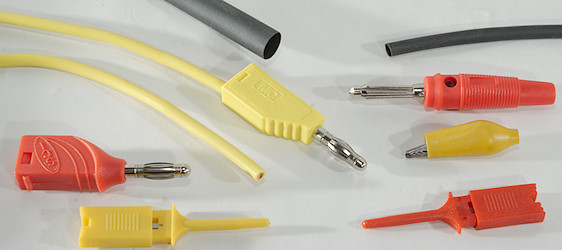
There is no reason to only buy probes, it is fairly easy to make some yourself.
I prefer good quality leads and use the best banana plugs I can find or cut some premade wires, mostly I also use soft silicone wire. Shrink wrap is very usefull when cutting an existing cable to replace one end with banana plugs.
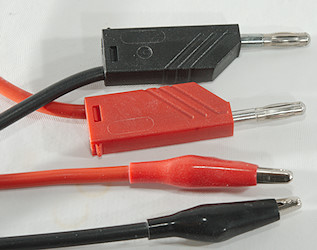
Test Leads with mini alligator clips. The wire is soft silicone. In some cases these works better than loose alligator clip.
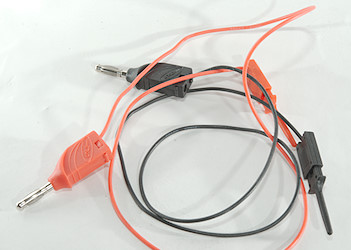
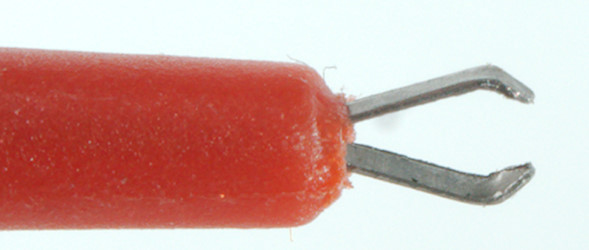
Mini grippers with thin (22AWG) soft silicon wires, they can clamp on leaded IC’s or small connector pins and stay there while I push buttons or do some other stuff. Cheap mini grippers are usual not in very good quality and have to be fixed at regular intervals.
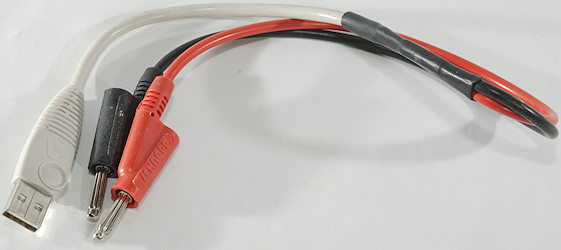
Usb power.
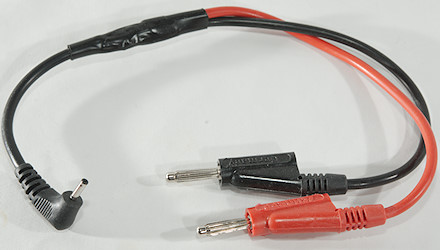
Mini DC connector, this is not as much for a multimeter, but for use with a power supply and maybe a multimeter to check power consumption.
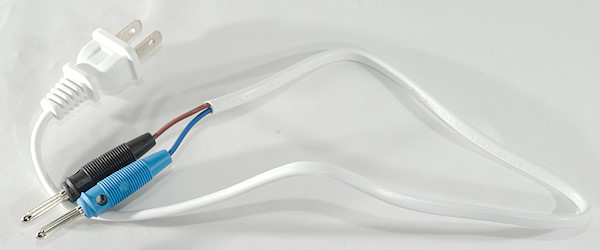
From US socket to test equipment, being it a multimeter or something else. This is not the safest wire around, at least all my 120VAC is isolated from ground.
For US I will definitely recommend using shrouded plugs with this cable.

For testing mains I use shrouded plugs. This wire can both be used for current and voltage, but a single mistake will blow a fuse! This cable is made for a specific multimeter where the color coding match.
Conclusion
You do not have to live with the supplied probes, if you have bought a full size multimeter, there are options to make connections easier. The DIY options is also very interesting for probes, it is fairly easy (If you know how to use a solder iron) and you can make some measurements and tests much easier.
Notes
I test some test cables here:
DANIU 1M 4mm Banana to Banana Plug Soft Silicone Test Cable
DANIU 1M 4mm Banana to Banana Plug Shrouded P1050
DANIU 1M 4mm Banana Plug to Alligator Clip
Other stuff about multimeters:
Multimeter and voltage measurements
Tolerance specifications for multimeters
Clamp meters magnetization, demagnetization and offset
Multimeters and current measurements
Multimeters and thermocouples
Multimeter and pulsed DC current (PWM)
